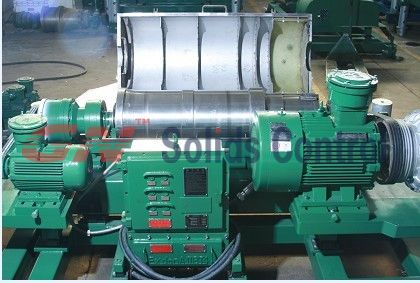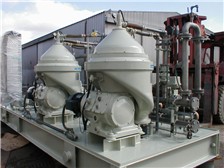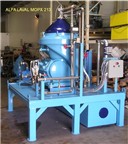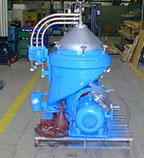Jonathan McLaughlin’s Blog
Proliferation/Nuclear Weapons
North Korea resumes activity at the Yongbyon facility: Commercial satellite imagery obtained by the Institute for Science and International Security (ISIS) taken on November 4th shows that North Korea has resumed construction at the Yongbyon facility. The North Koreans destroyed the site’s cooling tower and disabled the 5 megawatt-electric (MWe) gas graphite reactor at Yongbyon in 2008. After a recent visit to the site, Dr. Siegfried Hecker and Ambassador Jack Pritchard announced that the North Koreans were building a 25-30 MWe experimental light water reactor (LWR) at Yongbyon as well as a pilot enrichment facility. North Korea claims that the program is based entirely on domestic resources and experts.
In a report documenting his visit, Dr. Hecker indicates that the enrichment facility on site is small, containing about 2,000 centrifuges in six cascades. Each centrifuge is roughly eight inches in diameter and six feet high. The chief engineer told Hecker that the facility has a capacity of 8,000 kg Separate Work Units (SWU)/year. Fueling an LWR would require several tons of Low Enriched Uranium (LEU), which could be produced at the facility at Yongbyon. Hecker notes that the pilot LWR will use uranium dioxide fuel enriched to 3.5%. He found no evidence that Pyongyang has resumed plutonium production or restarted its gas graphite reactor. The new facilities appear to be primarily for civilian energy production, although they could be converted fairly quickly to produce Highly Enriched Uranium (HEU).
Hecker concludes that the revelations “do not fundamentally alter the security calculus of the United States or its allies at this time,” recommending engagement with Pyongyang. South Korean Foreign Ministry spokesman Kim Young-sun said the construction has yet to be verified, adding that any move to build a light-water reactor would violate U.N. resolutions. Today North Korean and South Korean forces exchanged barrages of artillery fire around the South Korean island of Yeonpyeong, killing two South Korean marines, wounding 19 other people, and damaging many buildings on the island. South Korea alleges that the North instigated the skirmish. It was preceded by warnings from Pyongyang to Seoul to stop conducting military drills in the area, which is close to the border between the two.
Computer worm possibly targeted Iranian centrifuges: A malicious computer worm known as Stuxnet has infested computer programs in Iran. Stuxnet causes the rate of electricity being delivered to fluctuate rapidly, reaching speeds of up to 1,410 cycles per second (Hertz). Nuclear analysts report that such fluctuation could badly damage Iranian centrifuges. New evidence suggests that that could be what the worm was designed to do.
While Iran acknowledged earlier this year that it was battling the Stuxnet worm, at this point there has been no reported damage to its centrifuges or any of its industrial facilities. The origin of the worm is still unknown, but there is reason to suspect that Israel was either involved or knew about it. Stuxnet has also appeared in computer programs in India, Indonesia, and several other countries. Iranian officials are scheduled to meet on December 5th with counterparts from the U.S., Russia, Britain, France, China, Germany, and the EU to discuss Iran’s nuclear program. At this point a venue has not been chosen.
NATO Summit in Lisbon
On November 19-20 the NATO Summit of Heads of State and Government was held in Lisbon. Among the items on the agenda were the war in Afghanistan, NATO-Russian relations, and missile defense systems in Europe. Russia agreed to cooperate with NATO on a missile defense system in Europe, an agreement which was a key goal for NATO officials leading up to the summit.
Russian President Dmitry Medvedev warned, however, that this cooperation must be a “full-fledged strategic partnership,” not simply a token gesture to Moscow. The cost of the shield is expected to exceed $100 million. The new Strategic Concept drafted at the summit reaffirmed the value of nuclear weapons in the alliance as the “supreme guarantee of the security of the [NATO] allies.” It did not commit to the removal or further drawdown of the estimated 150-200 U.S. tactical nuclear weapons remaining in Europe, but stated that it sought to create the conditions for further reductions in the future.
New START ratification could be stalled in the Senate
Last week Senator John Kyl (R-AZ) announced that the Senate should not bring New START to the floor for a vote on ratification during the lame duck session, citing the busy Senate agenda and the “complex and unresolved issues related to START and modernization” of the nuclear weapons complex. President Obama has pledged over $80 billion for modernization, but Kyl is holding out for additional funding and more details on the plan. The president responded with a forceful call to the Senate to ratify the pact during a high-level meeting last week on New START.
"The stakes for American national security are clear, and they are high," he said. "This is not a matter that can be delayed." Attempting to stifle this push, last Thursday 10 Republican Senators-elect sent Majority leader Harry Reid (D-NV) a letter urging the delay of a ratification vote until the new Senate convenes in January. At the NATO Summit in Lisbon, a number of European leaders, including German Chancellor Angela Merkel and NATO Secretary General Anders Fogh Rasmussen, expressed concern that failure to ratify New START would harm the alliance’s relations with Russia and weaken its ability to deal with Iran.
Nuclear Energy & Environment
Powertech Sues Colorado over groundwater protection laws: Last week Powertech Uranium Corp. sued the state of Colorado for its groundwater protection regulations for and minerals. In a complaint filed in the Colorado District Court, Powertech claimed that four lawmakers tried to improperly influence the Mined Land Reclamation Board's rulemaking and violated constitutional rules separating the legislative and executive branches. The complaint also criticized recently enacted state rules requiring in-situ uranium minesuranium developers to return groundwater to its original condition upon completion of the mining. The rules also require developers to provide five examples of other uranium mines where groundwater was successfully restored to pre-mining conditions. Powertech claims that these rules are arbitrary and will harm investment while critics say in-situ mining poses unacceptable risks to the groundwater supply
Governor proposes second nuclear plant for Missouri: on Friday Missouri governor Jay Nixon announced that he was pursuing legislation to build a second nuclear power plant in central Missouri. State utility companies have been calling for the option to build a second nuclear plant, citing potential EPA carbon regulations. Under the governor’s proposal, utilities would be allowed to charge customers the cost of getting early site permits for the plants. This would require repealing a law enacted in 1976 prohibiting utilities from charging customers the costs of a new power plant before it starts producing electricity. This repeal provision has drawn heavy criticism from consumer advocates. Nixon said the early site permit would cost about $40 million and customers would pay an extra $1 to $2 per year.
Additional radioactive contamination discovered at Hanford Site: Last week the Department of Energy (DOE) announced that workers cleaning up the Hanford nuclear site in Washington state found soil with a level of radioactivity that exceeds lethal limits by tenfold. A spokesperson for the cleanup contractor Washington Closure explained that the danger with such high levels of contamination are direct exposure to workers, the contamination becoming airborne, and the contamination seeping into the groundwater.
The contamination was discovered in Hanford’s 300 Area, one of the most difficult to decontaminate and demolish. Workers are reportedly trying to determine the scope of the contamination and develop new plans to clean up and demolish the building. This announcement comes just days after a federal audit raised concerns about cleanup delays and costs at Hanford. The DOE’s Office of the Inspector General recently reviewed the department’s contract with the company CH2M Hill Plateau Remediation Co., which was originally scheduled to last through 2013. The Office found that the cost of the project has increased by 36 percent, is 13 percent over budget, and is far behind schedule.
Canadian Government releases energy plan: Today the Liberal government released its long-term energy plan. It will reportedly include the construction of two new nuclear reactors and the refurbishment of 10 older ones. These efforts are expected to cost well over the $26 billion figure quoted in 2006. The Canadian government says that these nuclear upgrades are necessary to meet its goal of phasing out coal-fired power plants by 2014. It intends to refurbish 10,000 Megawatts (MW) of existing nuclear power capacity and build other 2,000 MW at its Darlington site.
For background information on these issues, visit the NRDC Nuclear Program page: http://www.nrdc.org/nuclear/default.asp
source: switchboard.nrdc.org












